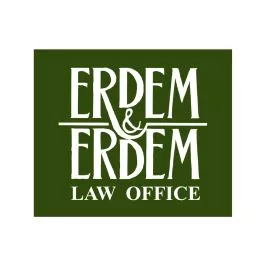Introduction
The 1990's hold significant importance by means of the developments that took place in the global economy. During the transition to the second half of the 1900's, the Federal Reserve increased interest rates, and the hot money flow changed its direction from East Asian countries to the West, the economic crisis of the Asian countries in 1998 caused the banks of Japan to lose 1 trillion United States Dollars and, then, the decrease of raw material prices led to an income loss in Russia, prompted Russia's ruble devaluation, and initiated problems that resulted in importers who were not able to pay their debts. Turkey, who exports 15% of its products to Russia, was also adversely influenced and faced a financial bottleneck in 1999.
When Turkey was still coping with the economic downturn, one of the vital industrial zones of the country, Izmit Gölcük, was hit by a massive earthquake in August 1999. Unfortunately, 3 months after that disaster, which resulted in loss of lives and properties to a great extent, another massive earthquake hit Düzce in November before the country had a chance to recover. As a result, the level of the economic crisis expanded. The economy shrank by 6%, inflation reached 70% levels, and the budget deficit also raised.
During that time, Turkey was trying to apply a program to reduce inflation and continued the fixed exchange rate policy. Due to the policy requirements, the value of 1 Turkish Lira was equal to the value of 1 United States Dollar and 1.5 Deutsche Marks. In line with the policy, the exchange rate increased by 20% every year. The aim of this policy was to ensure investors were not exchanging Turkish Lira currency. These policies resulted in interest rates to fall to a 40% level in Turkey, and faced very high levels of interest during the 1990s. As a result, the interest on special consumption goods and, eventually, importation of those goods increased. The foreign currency loss of the country kept increasing while the foreign currency reserve of the Central Bank ("CBRT") was inadequate. At that time, Turkey faced a significant liquidity crisis, and the overnight interest rates reached above 100% in November and December. This period prompted foreign investors to exchange Turkish Liras to United States Dollars and to exit the Turkish market. Even though the CBRT showed efforts to control the exchange rate by selling foreign currency took the situation under control until February of 2001, the meeting of the National Security Council on February 19 caused the withdrawal of 7.5 billion United States Dollars from the CBRT, the interbank market overnight rates rose to 7500% levels, which also resulted in the passing flowing rate on February 21, which brought on the 2001 crisis. The Turkish Lira lost against the Unites States Dollar by 40% in one day, and approximately 60% in two days. In September, that ratio reached to an almost 150% level.
Firstly, with the amendment1 that entered into force on November 26, 1999, the Special Communication Tax was entered into force for a limited period of time2 to recover the great losses that the massive earthquake caused. However, the liquidity crises of the second half of 2000, the 2001 February crises, devaluation, the loss of value of the Turkish Lira, the blockage of the banking system, and the extreme adverse effects on commerce, necessitated new precautions and the restructuring of the economy and the banking industry.
Turkish tax law was also affected from that restructuring. With the amendments made in 1985, six indirect taxes were abolished and value added taxes began to apply in Turkey. Another radical change similar to this one was the special consumption tax. The endeavors as to the special consumption tax started in 1993, and the related proposal was offered to the Turkish Great National Assembly in 1996. The proposal was accepted with some revisions by the National Assembly in May, 2002, and Special Consumption Tax Law was published in the Official Gazette dated 12.06.2002 and entered into force on 01.08.2002. With this Law, 16 indirect taxes were abolished, those abolished taxes were grouped together as a single type of tax, and the special consumption tax began to apply. In the preamble of the Law, it is stated that the Law aims to regulate taxes in line with the varying consumer expenditures and simplification of the current confusing structure, and compliance with the European Union. In actual fact, the special consumption tax is a sum of taxes that used to be collected under different names, and also made some expenditures, purchases and products subject to taxation.
The taxable events in the SCT are:
- Delivery of a good or initial acquisition for delivery of goods or initial acquisitions;
- The issuance of an invoice or similar document if an invoice or similar document is provided before the delivery of the goods, on the condition that the amount is limited to the amount shown in those documents;
- The delivery of each part if split delivery is habitual, or the parties have agreed on split deliveries;
- The delivery of goods to the buyer for sales made by brokers or consignment sales;
- The initiation of customs burden according to Customs Law numbered 4458 for imports, and the registration of a bill of entry for transactions that are not subject to import taxes.
The SCT, unlike the VAT, is a one-stage tax and is collected only once, at the first acquisition. Pursuant to Article 4 of the SCT Law, the taxpayers of the SCT are those who manufacture, construct or import the goods under tariffs (I), (III) and (IV) and those that are not subject to recording and registration or selling them through auctions among the goods in tariff (II), and for those subject to recording and registration among the goods in tariff number (II); those who trade motor vehicles, import them for use, or sell them through auctions.
The Scope of SCT
With the entry into force of the Special Consumption Tax, a single indirect tax is applied at the stage of import, manufacturing, or initial acquisition, in addition to the Value Added Tax. Although the Special Consumption Tax Law is a law of 28 articles, it has changed many times over the past 18 years. The list of goods covered by the SCT increases daily, together with increases in the current tax rates.
The goods covered by the SCT are collected in four separate lists. These may be summarized as fuel oil, motor vehicles, coke drinks and alcoholic beverages and tobacco products, durable consumer goods and luxury consumer goods.
In 2019, 147.1 billion TL SCT was collected. 61 billion TL of this amount was obtained from petroleum and natural gas products, 50.3 billion TL from tobacco products, 13.8 billion TL from motor vehicle sales, 14.7 billion TL from alcohol products, 6.2 billion TL from durable consumer goods, and 1 billion TL from coke drinks.
With a share of 21.9% in tax revenues, the SCT is the most collected tax after Income Taxes. Together with the VAT, which is another indirect tax, the total of SCT that was collected was 327.3 billion TL. This figure, which corresponds to 48% of the total tax income, demonstrates the significance of indirect taxes in the tax income of our country.
It is generally accepted that in the 18 years since the SCT entered into force, the goods that are listed within the scope of SCT and the SCT rates have been increased. For instance, when the vehicle purchase tax, which was abolished by the SCT and paid at the first acquisition of vehicles, was in effect, tax calculation was made according to the weight of the vehicle. This valuation method was abandoned with the SCT, and the taxation system based on engine volume was introduced. Accordingly, it was decided to collect 27% SCT for the purchase of vehicles with an engine volume of 1600 cc and below, 46% for vehicles between 1601-2000 cc, and 50% for vehicles with 2001 cc and above. Although discounts were applied to vehicles with 1600 cc and with incentives in some periods, these rates have increased daily and, today, although it varies according to the tax-free price of the vehicle, the high level rates equal to 80%, 130% and 220% after the revision made in 2020. For this reason, in the purchase of a zero-kilometer vehicle, almost three out of four units of the price paid for the vehicle, together with the VAT applied after the SCT, is tax. Likewise, coke drinks were included in the SCT, even though they were not covered by the SCT before, and with the latest increase, 35% SCT was applied. Alcoholic beverages and tobacco products were also charged with additional VAT in the pre-SCT period, today all alcoholic beverages and tobacco products are included in the SCT, and are subject to taxation over 100%. Today, most goods used as household goods and numerous products subject to daily consumption are subjected to SCT. Continuous revisions in SCT in recent years, including 2020, cause this tax item to remain on the agenda.
Conclusion
In line with the economic conditions of our country and the new economic programs, at the end of the 1990s and in the beginning of the 2000s, it was also necessary to make changes in accordance with the European Union harmonization laws. The Special Consumption Tax Law, which occupied the agenda for a long time, was prepared with the justification of simplifying the taxes and combining many different tax regulations into a single law, and entered into force in August, 2002, and was put into practice as the second largest indirect tax after VAT.
SCT, whose scope has expanded and its rates have increased over time, has become an indispensable type of tax with its share in the budget, and together with VAT, it constitutes half of the tax revenues.
Footnotes
1 The Law to Recover Economic Losses Caused by the Earthquake in Marmara Region and Surroundings in 17.8.1999 and 12.11.1999 on Taxation of Some Obligations and Changes in Some Tax Law (Law No. 4481) entered into force by publication of the Official Gazette dated 26.11.1999.
2 At first, Special Communication Tax was designated to stay in force until 31.12.2003. It became permanent by the amendment made in 2005.
The content of this article is intended to provide a general guide to the subject matter. Specialist advice should be sought about your specific circumstances.

